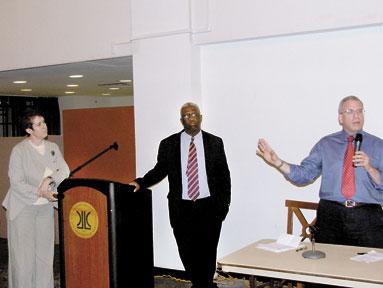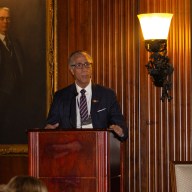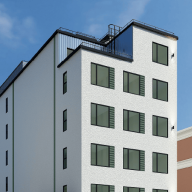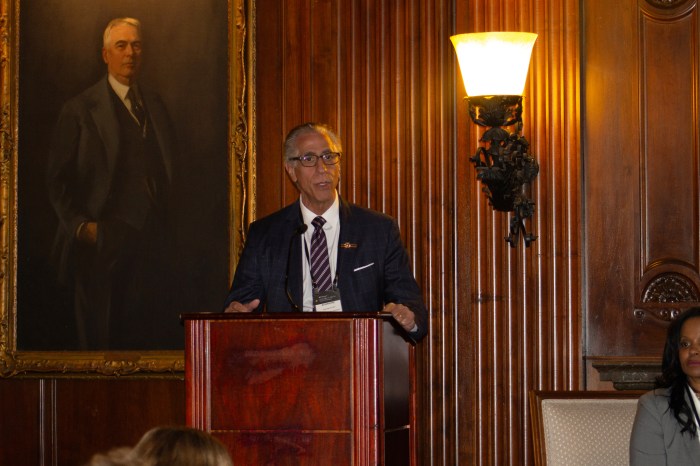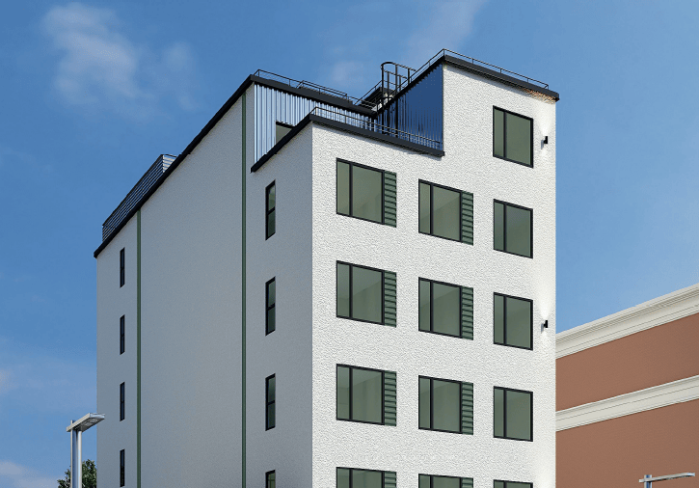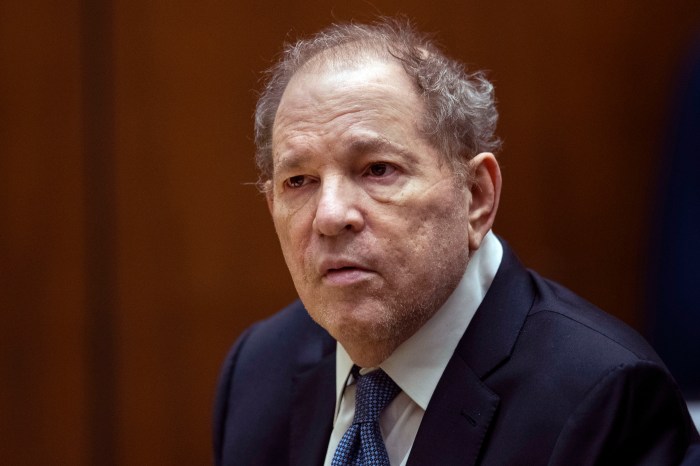The Tuesday, July 15 meeting, held at Lehman College, included the Department of Environmental Protection, the Fire Department, and members of the public to discuss the blasting of rock at the Jerome Park Reservoir in order to install a meter and flow station for the Croton Filtration Plant.
Parks all over the Bronx received more than $200 million for improvements in exchange for allowing the installation of the filtration plant under the Mosholu Park Golf Course, but residents feel duped by the DEP, stating that the current plans do not match those originally proposed for the plant’s construction.
More than 10 members of the public spoke at the hearing, which was hosted by Community Board 7 and included representatives from community boards 8 and 12 as well.
DEP’s original Environmental Impact Study called for the agency to mechanically dig out 375 cubic yards of rock and 1,800 cubic yards of soil while building a new meter and flow station near gatehouse 5 at the reservoir.
Now, DEP says the blasting method of removing rock is the preferred method and will have less of a negative environmental impact than using a hoe-ram to dig for the station at the reservoir, which sits right next to “education mile,” a location where 25,000 students attend classes from elementary school through college, and near where 50,000 residents live.
“This project was sold, in part, with the understanding that there would be no blasting,” said Councilman Oliver Koppell.
Koppell also wrote a letter to the Mayor Michael Bloomberg strongly opposing the idea of blasting at the site.
“Presumably, the DEP’s decision to mechanically dig was at least partly based on the premise that doing so would eliminate the hazardous conditions caused by blasting,” Koppell stated. “I wonder why, if such unfavorable conditions during blasting were apparent when the EIS was originally written, would blasting now be any less hazardous to the community?”
The reservoir, of which the meter and pumping station are a part, currently provides 3% of the City’s water, but will be able to provide 30% when the filtration plant is up and running.
If the blasting were to occur, it would happen over a three-week period in the immediate vicinity of Goulden Avenue. DEP said that blasts would not be scheduled while children were arriving or exiting school, something parents and local leaders counter is logistically impossible. Residents nearby remain skeptical.
“Tracy Towers is the largest structure in the Bronx with more than 40 stories, but there is nothing but columns holding up part of a building where the parking lot is located,” said Carolyn Smith, a resident who feels the blasts could damage the building. “We have had to have walls rebuilt in the past.”
Also discussed at the meeting was the construction of a pipeline that will dispose of waste matter from the Jerome Park Reservoir in the waters of the East River off Hunts Point.
Officials present at the meeting included Koppell, Senator Efrain Gonzalez, Assemblyman Jeffery Dinowitz, DEP Deputy commissioner Ann Canty, and James Lauer, Chief FDNY Inspector who attempted to sell the audience on the virtues of blasting, the biggest bone of contention for those assembled.
Dinowitz chastised DEP for not having filed appropriate paperwork with the Department of Buildings for a permit, because according to the DEP, the meter and pump station is necessary to maintain the integrity of an underground pipe, a loophole that appears to be in place for emergency situations.
“I have a hard time believing anything the DEP tells us,” Dinowitz noted. “This could have a significant impact on the community, yet the DEP doesn’t even have a building permit.”
DEP did not officially comment by press time.

